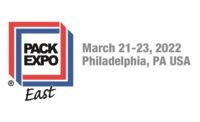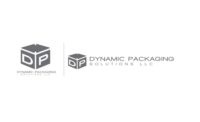The Latest Generation of easy to Sanitze Food Packaging Systems
Maximize Food Safety Practices
Multivac’s latest model R530 and R240 thermoform rollstock packaging systems feature the latest advancements in easy-to-sanitize design. These progressive enhancements include reduced flat surfaces, hermetically sealed hollow components, and one-piece construction of many parts to avoid crevices and water collection points. Based on the American Meat Institute’s (AMI) 10-point guidelines, USDA standards, 3-A standards, and feedback from Multivac customers, these new features are designed to help processors maximize their food-safety practices.
Comprehensive Review
Multivac worked closely with AMI members at companies including Land O’ Frost to evaluate its rollstock systems based on AMI’s new sanitary design guidelines. Multivac has also embraced the USDA’s voluntary program by engineering the systems to address the USDA’s stringent sanitation requirements. Multivac is currently the only horizontal form-fill-seal manufacturer to gain acceptance in the USDA’s voluntary program. In addition, the company has also received authorization to apply the 3-A symbol.
Historic Achievment
These developments are the latest progression in Multivac’s historic progress in engineering packaging systems conducive to sanitation. The R530 was first introduced with all stainless steel surface construction in 1991, launching Multivac’s sanitation initiative. Today, Multivac’s full line of rollstock systems, traysealers, and chamber equipment features stainless-steel construction, full wash-down capabilities, and other design engineering to facilitate easy cleaning. As part of the design and development process of this system, Multivac invited customers and AMI sanitary design committee members to review the system. After this review, Multivac further enhanced current systems and the review will be the basis for future Multivac designs.
Customers and AMI Input
As part of the design and development process of this system, Multivac invited customers and AMI sanitary design committee members to review the system. After this review, Multivac further enhanced current systems and the review will be the basis for future Multivac designs.
“We chose to approach machine sanitary design by working with and gathering information from industry experts, the AMI, the USDA, 3-A, as well as customers. This process has helped us to engineer the next generation of easy-to-sanitize packaging equipment,” notes Michel Defenbau, president, Multivac Inc. “This continuous development has long been a part of our history and we will continue to pioneer new advancements in sanitary machine design.”
More Resources
Sanitation design will continue to evolve as manufacturers and industry organizations apply collective knowledge and advancing engineering to create safer and more efficient processes. Today, there is an unprecedented amount of information regarding machine design and implementation in a clean-processing-floor environment. Organizations such as the AMI, 3-A, and the USDA offer plant owners and managers information on what to look for in packaging equipment that will best suit their needs within a plant. These organizations also offer invaluable guidance to machine manufacturers to continually grow and evolve their easy-to-clean designs. Maximizing use of the knowledge base is the best way to continue our advance in safety and sanitation in food. — Multivac Inc., phone (800) 800-8552, email foodsafety@multivac.com, or visit Multivac’s Food Safety Web Resource at www.multivac.com



Report Abusive Comment